Canning Baby Food. Is it Possible?
How safe is canning baby
food at home? Well, it is and it isn't. If you want to can fruits that
have a high acidity, no problem. But when it comes to low
acidic vegetables, chicken, fish, and meat, it is not advisable at all
to can your own baby food. This is because foods that are low in acids
have the possibility of breeding bacteria, and this then could become a
major health risk to your baby.
But when it comes to fruit, canning your own baby food definitely has some advantages.
But when it comes to fruit, canning your own baby food definitely has some advantages.
Advantages of Canning Baby Food
Canning baby food at
home for your babies means that you don't have to worry about high
levels of salt sugar, starch or preservatives. Young mothers only want
the best for their babies and by making homemade fruit purees
they know exactly what has gone inside the recipe. Like you and
I like variety in what you eat, so do babies, so give your baby a
variety of fruit and vegetables to also given them a balanced diet.
Canning Baby Food Guidelines to Food Safety
Salt and Sugar in Homemade Baby Food
There are some
guidelines you need to follow to make sure that your baby food is safe
from any contaminents and has been processed safely.
First of all, don't over salt and don't over sugar. Your baby's taste buds have not yet developed to be as sophisticated as yours, therefore when canning baby food reduce the amount of salt that you would normally place in your own food when cooking. This is also important to do so that there is
no undue strain put on the kidneys.
The same goes for sugar. Diabetes is a major health issue these days that unfortunately starts in the cradle.
First of all, don't over salt and don't over sugar. Your baby's taste buds have not yet developed to be as sophisticated as yours, therefore when canning baby food reduce the amount of salt that you would normally place in your own food when cooking. This is also important to do so that there is
no undue strain put on the kidneys.
The same goes for sugar. Diabetes is a major health issue these days that unfortunately starts in the cradle.
Canning Baby Food using Fruit
Make sure that you puree any fruit except:
- bananas
- figs
- mangoes
- papayas/pawpaws
This is because these
fruits do not have sufficient acids and therefore can easily spoil. If
necessary, sweeten the puree with a little sugar. I am a strong
advocate
of honey over sugar, but in this instance, it is not good to use honey.
Using honey with fruit purees in canned baby food can cause infant botulism due to the presence of bacterial spores that babies are unable to digest and pass through the system. As a result, never give a baby honey under the age of 12 months, until the digestive system is more mature.
Using honey with fruit purees in canned baby food can cause infant botulism due to the presence of bacterial spores that babies are unable to digest and pass through the system. As a result, never give a baby honey under the age of 12 months, until the digestive system is more mature.
Two Jars of Homemade Baby Food
using Pears
The standard recipe for canning fruit for baby food is as follows:
Stem, wash, pit, peel
and core your fruit. Place in some water that has a tablespoon of cider
vinegar in it. This will prevent your fruit from turning brown.
Either crush or chop up the fruit and for each quart of fruit add 1 cup of hot water. Place together in a saucepan and cook slowly until your fruit is soft. Stir often. Press through a sieve when soft or you can use the fine blade of a food mill.
Ladle the hot puree into hot, sterilized half-pint (4 oz) jars, leaving a 1/4 inch head space. Process for 20 k minutes in a hot pack method of canning.
Either crush or chop up the fruit and for each quart of fruit add 1 cup of hot water. Place together in a saucepan and cook slowly until your fruit is soft. Stir often. Press through a sieve when soft or you can use the fine blade of a food mill.
Ladle the hot puree into hot, sterilized half-pint (4 oz) jars, leaving a 1/4 inch head space. Process for 20 k minutes in a hot pack method of canning.
You can use the following processing times as a guideline:
- Process for 20 minutes at 0-1,1000 ft altitude
- 15 minutes at 1,000 - 6,000 ft altitude
- 30 minutes above 6,000 ft.
The longer times of
processing than usual make sure that these foods will be totally safe
for your babies little tummies which don't have a well developed immune
system to fight off any ill-effects of contaminated food.
Canning Baby food using Vegetables
It is simple enough to
boil up some vegetables and put it through a food mill to get them to
the consistency that babies will find acceptable. However, when it
comes to canning such vegetables there is no proven home-canning times
for homemade baby food made from low-acid vegetables.
As a result, the only way I used to use these mashed vegetables was to place them in ice cube trays and freeze them. Once frozen, I would take a portion out of the ice cube trays, place them directly into freezer bags, label and date them.
When I wanted to use them i would take them out, thaw them and then heat them through in a saucepan over low heat. You can use a microwave, if you wanted to, but I don't like or trust microwave cooking, and so I just
used to heat them up the old-fashioned way.
As a result, the only way I used to use these mashed vegetables was to place them in ice cube trays and freeze them. Once frozen, I would take a portion out of the ice cube trays, place them directly into freezer bags, label and date them.
When I wanted to use them i would take them out, thaw them and then heat them through in a saucepan over low heat. You can use a microwave, if you wanted to, but I don't like or trust microwave cooking, and so I just
used to heat them up the old-fashioned way.
Canning Baby Food using Fish, Poultry and Meat
Canning any low acid
food, especially fish, chicken, meat etc. is not
safe for babies at all. Too much can go wrong and it is not advisable
to can fish and meat for your babies, period.
Canning Baby Food Conclusions
So, wrapping up, you can
see that making your own baby food is to be encouraged, but canning it,
is a whole different ball game. Food safety is paramount, and botulism
is the number one enemy of home canning.
Because babies are so vulnerable to a host of germs and bacteria in their every day lives, giving them food that could cause them ill, is not something any mother wants for her child.
So stick to acidic fruits, process them for longer than usual, taking note of your altitude, and stay away from vegetables and meat, and allow the commercial people to do the job for you. They have the equipment that will bring these foods to a much higher temperature than you can do at home, even with using a pressure cooker. It really isn't worth the risk.
Because babies are so vulnerable to a host of germs and bacteria in their every day lives, giving them food that could cause them ill, is not something any mother wants for her child.
So stick to acidic fruits, process them for longer than usual, taking note of your altitude, and stay away from vegetables and meat, and allow the commercial people to do the job for you. They have the equipment that will bring these foods to a much higher temperature than you can do at home, even with using a pressure cooker. It really isn't worth the risk.
Did you find this page helpful?
Sharing is a way of saying, "Thanks!"
Follow Us and Keep Up to Date
Don't miss out on our latest news and articles. Sign up for our free monthly e-zine!
Go from Canning Baby Food back to Home CanningGo back to the Home Page
OTHER SECTIONS OF INTEREST
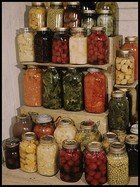 Home
Canning
Home
Canning Canning
Applesauce
Canning
Applesauce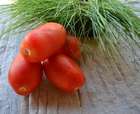 Canning Tomatoes
Canning Tomatoes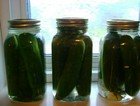
How to Make Pickles
 More Canning Recipes
More Canning Recipes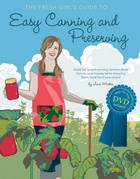
Home Canning Book
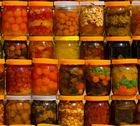
Preserving Food
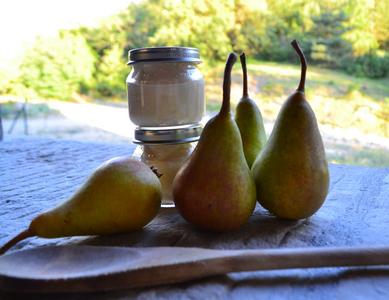



New! Comments
Do you have something of value to add? Leave me a comment in the box below.